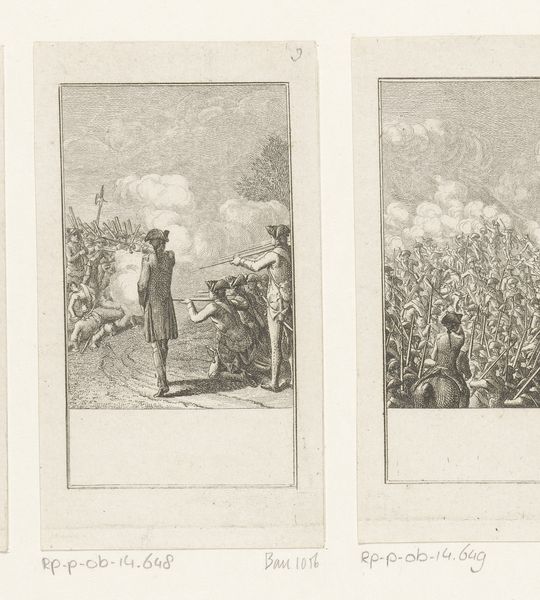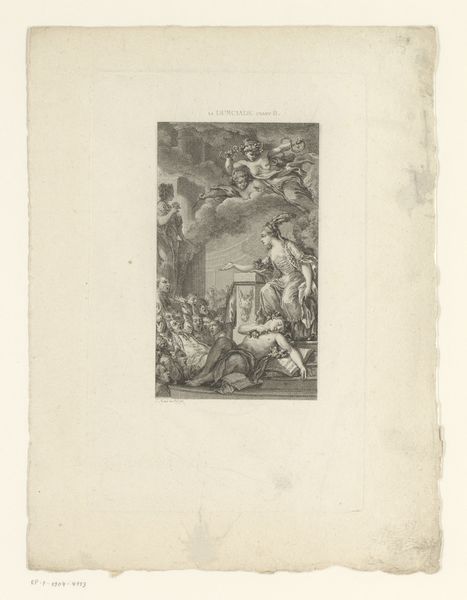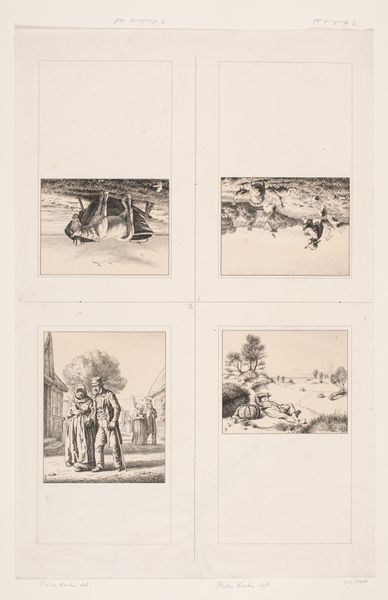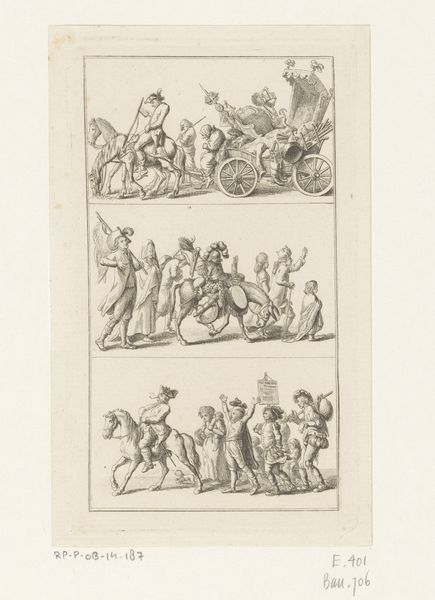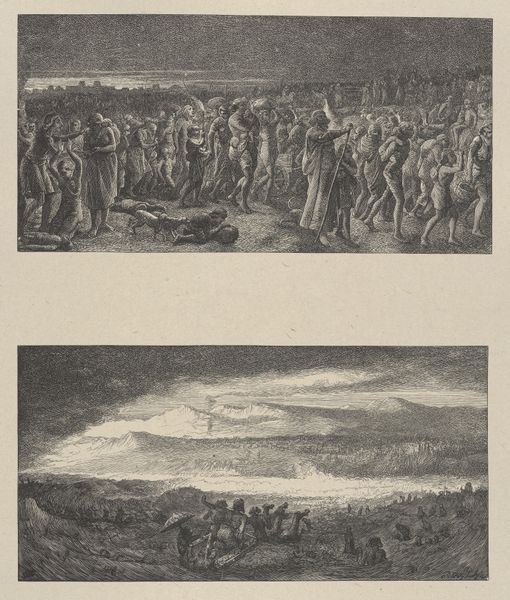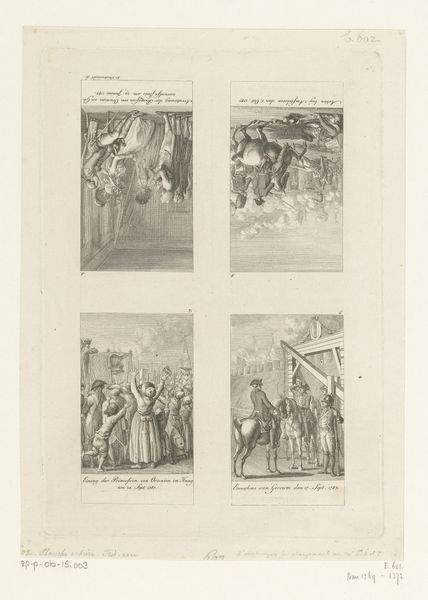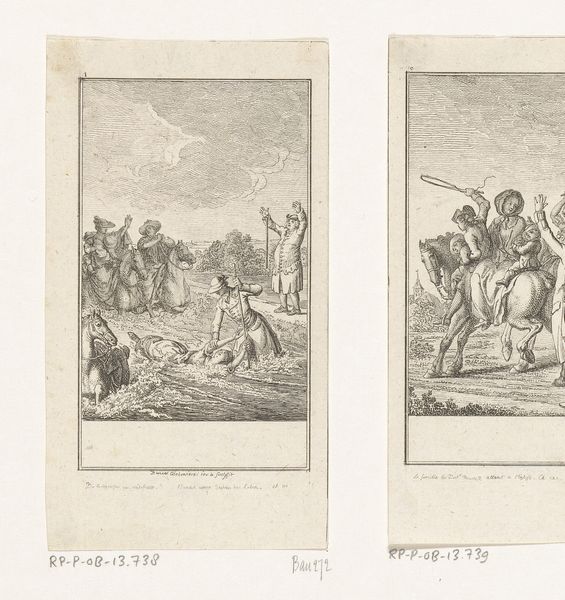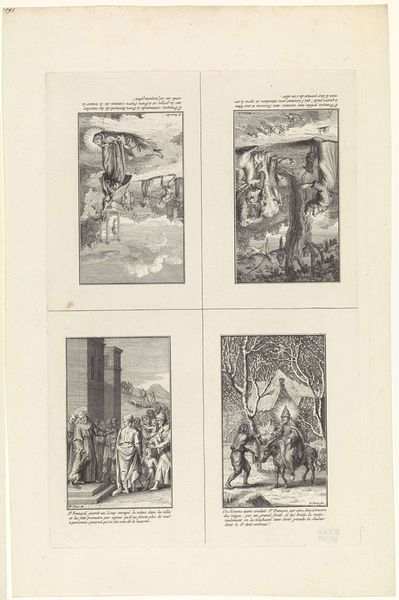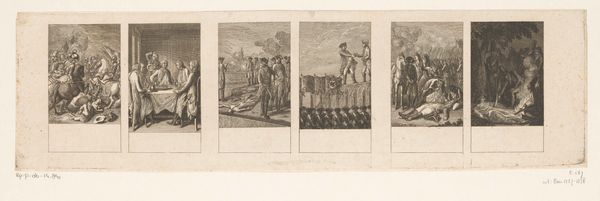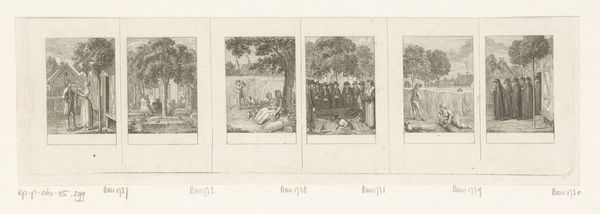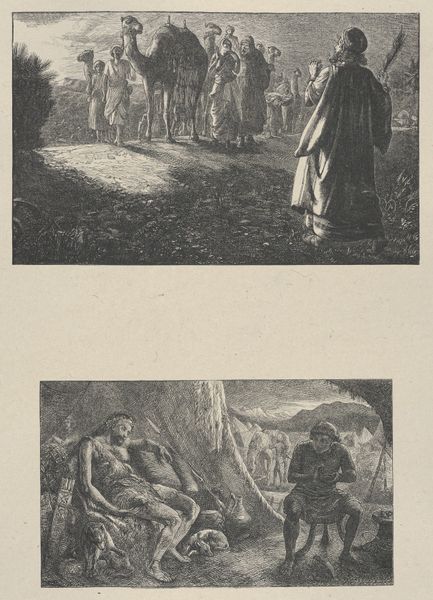
Characteristics of King Frederik II (Part III) 1800
0:00
0:00
print, etching, engraving
#
portrait
#
neoclacissism
#
narrative-art
# print
#
etching
#
history-painting
#
engraving
Dimensions: plate: 21.4 x 13 cm (8 7/16 x 5 1/8 in.) sheet: 29 x 19.1 cm (11 7/16 x 7 1/2 in.)
Copyright: National Gallery of Art: CC0 1.0
Editor: This is "Characteristics of King Frederik II (Part III)" by Daniel Nikolaus Chodowiecki, created around 1800. It appears to be a print, maybe an etching or engraving, showing four separate scenes. The mood seems…critical, perhaps satirical? What do you see in this piece? Curator: What strikes me immediately is the intersection of portraiture and narrative. Chodowiecki gives us Frederick II, not as a majestic individual, but through a series of…episodes. This is more than just history painting. These vignettes challenge traditional, idealized depictions of rulers by incorporating the lives of the common soldier into his story. Consider how that impacts concepts of national identity and military service. What do these scenes seem to suggest to you? Editor: Well, some seem quite gruesome. There’s violence… maybe the cost of war, but some look almost comical? Like an inversion of proper behavior. Curator: Exactly. This tension between the comedic and the brutal exposes the hypocrisy of power. It hints at a broader critique of leadership and the social order. Consider, too, the historical context. What revolutionary ideologies were circulating at the time and how might they have influenced Chodowiecki’s representation? Editor: So, he's not just portraying history, but commenting on it...subversively? Highlighting power structures and inequalities inherent within that historical moment? Curator: Precisely. Think of the print medium itself – relatively accessible. This brings those revolutionary ideas and social critiques to a broader audience. Do you get a sense of who might have been viewing this at the time? Editor: Probably not the king himself. Someone literate, with maybe some political awareness… maybe a budding revolutionary? Curator: Perhaps. This work shows the power of art to engage with politics and reshape how we understand historical figures and social movements. I now see the narrative art style as inherently subversive! Editor: That reframes it entirely! It's more than just a historical document; it's a political statement etched in ink. Thanks, I'll have a lot to think about!
Comments
No comments
Be the first to comment and join the conversation on the ultimate creative platform.
